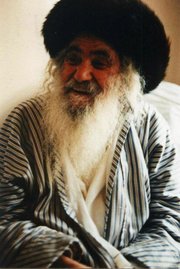Random
Ludwig Zamenhof, who invented the Esperanto language, called himself Doctor Esperanto (the hopeful doctor). His three children perished in the Holocaust. He is worshipped as a god by the Omoto-kyo Japanese religion. One of the more famous followers on Omoto-kyo was Morihei Ueshiba, the founder of the martial art Aikido.
Last night, I saw Syriana. Today, Israel invaded Lebanon.
A book on learning to write Chinese caught my eye in Border's a few days back. Each character takes something like 17 strokes to write. I don't know how they can learn to write that language.
The Green Tea energy drink from AriZona does absolutely nothing for boosting my energy, in spite of containing milk thistle.
Last night, I saw Syriana. Today, Israel invaded Lebanon.
A book on learning to write Chinese caught my eye in Border's a few days back. Each character takes something like 17 strokes to write. I don't know how they can learn to write that language.
The Green Tea energy drink from AriZona does absolutely nothing for boosting my energy, in spite of containing milk thistle.


6 Comments:
Fascinating.
What's the religion about? What did you think of Syriana?
irina,
you can check out omoto on Wikipedia. It is not a mainstream religion. I have no idea why the association to Esperanto.
Syriana was interesting, but did not blow me away. I felt like it didn't really tie together well at the end.
There is a quote going around in the religious discussion blogs to the effect of:
If you believe everything that's written, you are a fool; if you believe none, you are a heretic.
The same is true of politics. It is naive to think that the world is not run by powerful people, whose interests are not in any way altruistic or idealistic. But it is also not one giant black helicopter, tinfoil helmet level conspiracy.
Actually, Chinese is relatively speaking not so hard.
Characters range from one stroke characters on up to compounds of over thirty strokes. But the key thing to remember, which also illustrates both why most characters have less than twenty strokes AND are not so hard to remember, is that most characters are composed of two parts which you will have seen in many other characters - one of which points to the sound, one of which points to the meaning.
Most "words" are actually compounds, wherefore rather than actually having to memorize a distinct character for a vocabulary of around ten-thousand words, you actually only need around thrity-five hundred characters (of which most are, as mentioned above, compounds of two different graphic elements).
The building blocks of the characters are called 'radicals'. There are 214 of them. Think of that number as being just as important as the number of mitzvos.
Radicals are the meaining keys under which you would look up most characters in a dictionary.
There are also close to two thousand characters which are used as phonetic components of other characters, in combination with a radical. Of these, around twon hundred occur so often that you will soon recognize them. The other occur in words used less often, which are usually also more complicated.
I remember one word which I had never seen before in a poem by Li Po. It turned out to be an archaic term for a type of alcoholic barley mash used as ritual libation a thousand years before he wrote the poem. I have not found a use for that word since. Except when talking about that poem.
Back of the Hill,
You sure make it sound easy...
compared to Akkadian, maybe :)
PS, can you put a contact email on your blog? I'd love to email you with some questions about your posts?
PS, can you put a contact email on your blog? I'd love to email you with some questions about your posts?
northbeachlizard at yahoo dot com
I'm going to put that in the 'occupation' field on my profile.
Post a Comment
<< Home